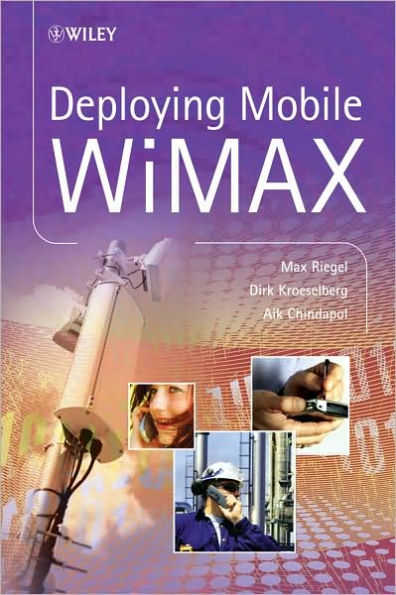Table of Contents
About the Authors.
Preface.
Acknowledgements.
List of Acronyms .
1. Introduction.
1.1 WiMAX in the Telecommunication Markets.
1.2 Mobile WiMAX Specifications.
1.3 About This book.
2. Network Architecture.
2.1 Providing Access to the Internet.
2.2 Mobile WiMAX Network Reference Architecture.
2.3 Mobile WiMAX Roaming Architecture.
2.4 Ethernet Services Support.
2.5 Mobile WiMAX and 3GPP SAE/LTE.
3. Subscription Handling and Security.
3.1 The Meaning of a Subscription.
3.2 A Network Reference Model for Security.
3.3 Subscription versus Device Authentication.
3.4 Certificates and the WiMAX Public Key Infrastructure.
3.5 Security Design Considerations in the WiMAX Network Architecture.
3.6 "Bootstrapping" a Subscription Over-The-Air.
3.7 Identities in Mobile WiMAX.
3.8 AAA Protocols and Routing in WiMAX.
4. Service Provisioning.
4.1 Enablers for WiMAX Based Services.
4.2 AAA Support for Services and Applications.
4.3 Accounting & Charging.
4.4 Network QoS Architecture.
4.5 Location Support.
4.6 IMS support.
4.7 Emergency Services in WiMAX.
5. Mobility.
5.1 Mobile Networking.
5.2 WiMAX Mobility Architecture.
5.3 CSN-Anchored Mobility.
5.4 ASN-Anchored Mobility.
5.5 Simple IP.
5.6 Mobility Restriction.
6. WiMAX Radio Interface.
6.1 Physical Layer.
6.2 MAC Layer.
6.3 Mobility Support.
7. Radio Evolution beyond System Profile Release 1.0.
7.1 Mobile WiMAX System Profile Release 1.5.
8. Outlook.
8.1 WiMAX Forum Release Planning.
8.2 Network Architecture Evolution.
8.3 Support for Femtoell Deployments.
8.4 IEEE 802.16m and Relay Support.
References.
Index.




